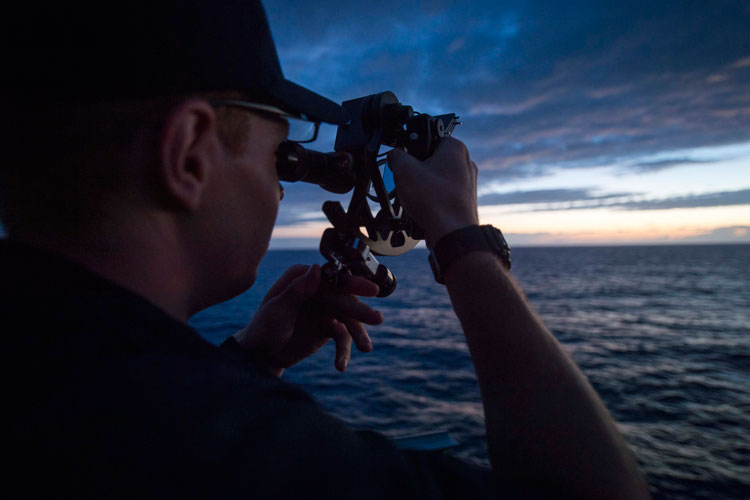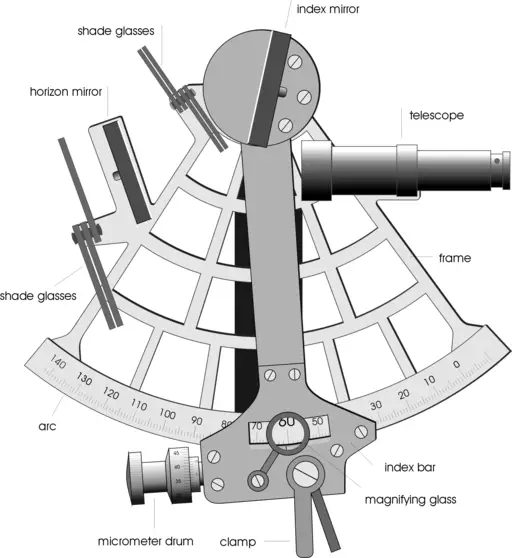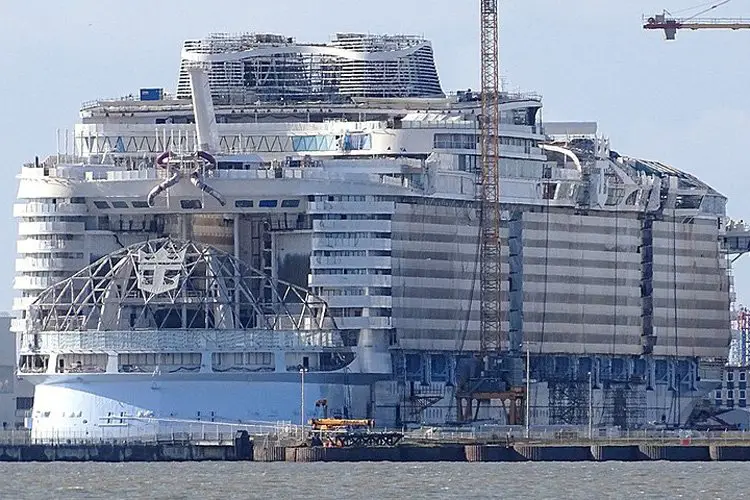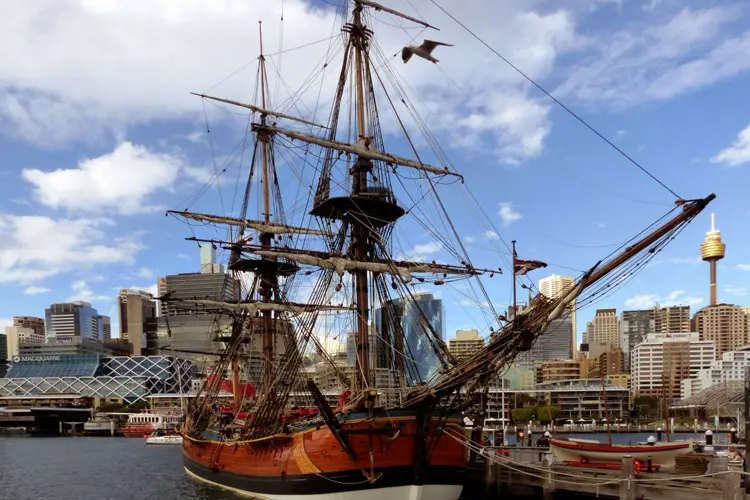What Is A Marine Sextant?

All About Marine Sextant
A Marine sextant is an instrument for measuring the angular distance between two visible objects, primarily used for measuring the angular distance between an astronomical object and the horizon in astronavigation.
It is a complex system of mirrors that enhances the navigator’s ability to make measurements. The use of mirrors permits the user to observe and measure the angular distances between two objects simultaneously.
Origin of Marine sextant
The device has a long history. John Bird made the first sextant in 1757. Admiral John Campbell found that Hadley’s octant proved to be not so useful in the trials of the method of lunar distances (angular distances between the moon and other celestial bodies) because the 90-degree angle subtended by the arc of the instrument was insufficient. He proposed the angle be increased to 120 degrees thus creating the sextant. The sextants that are used actually have a little over 130 degrees.
How does a Sextant Work?

The sextant, as mentioned earlier, uses two mirrors. To allow the passage of light through it, one of the mirrors is half-silvered. While using the sextant the navigator uses this mirror to see the horizon. The other mirror is attached to a moveable arm. This arm can be used to move the mirror so that it can be brought to such a position where the object reflected on the mirror superimposes on the line of the horizon. Then the reading is taken from the scale which measures the angular distance between them.
The sextant is an extremely accurate navigational tool and can precisely measure an angle to the nearest ten seconds (as in degrees, minutes, and seconds).
A Marine sextant is an instrument for measuring the angular distance between two visible objects, primarily used for measuring the angular distance between an astronomical object and the horizon in astronavigation
How to use a Sextant?
GPS or Global Positioning System has almost totally replaced the use of a sextant. This is because using a sextant is a complicated process. It requires calculating, referring to tables, an in-depth understanding of the sky and the earth, and of course a bit of common sense. Despite its complexity, the basic rules remain fairly straightforward.
To find the latitude you must measure the angle between the horizon and the sun using the previously mentioned method. You should be doing this when the sun is at its highest, i.e. noon. Your tables will tell you the line of latitude on which the sun should be on that particular day.
For a better understanding consider the noon of December 21 and the sun is directly overhead. Taking a look at your tables you come to know that the sun is above the Tropic of Capricorn. From that, you can infer that your latitude is 23.5 degrees S.
To find the longitude you need to get hold of a chronometer. Since the earth moves 15 degrees every hour, it means that after exactly one hour the earth would have moved 15 degrees West. Now suppose it is 2 o’clock according to the chronometer that you had set to noon. This means 2 hours ago the sun was at 0 degrees longitude. So in these 2 hours, the earth moved 30 degrees. From this, you can come to the conclusion that you are 30 degrees West.
Errors of the sextant
Before knowing about the errors of a marine sextant and how to remove them, it is a good idea to clarify some key concepts on the readings of the sextant. The normal markings to the left of zero extending up to 130 degrees are referred to as ON the arc, whereas that to the right of) degrees are read as OFF the arc. The graduation should be read in the reverse direction when reading the arc.
The errors can be broadly classified into 2 types: i) adjustable errors and ii) non-adjustable errors
The adjustable errors are the ones that the navigator can and should fix. They are further classified into perpendicular error, side error, collimation error, and index error and they should be fixed in this particular order.
i) Perpendicular error
This happens when the frame of the sextant and the index mirror are not perpendicular to each other.
To check this, you need to place the index arm at about 60° on the arc and hold the sextant horizontally with the arc away from you at arm’s length. Then look into the index mirror. If there is no error the arc of the sextant should appear as continuous and unbroken into the mirror.
If the two views appear to be broken, then there must be an error. Thereby you should adjust the mirror until the reflection and direct view of the arc appear to be continuous.
ii) Side error
This happens when the horizon glass/mirror and the plane of the instrument are not perpendicular to each other. To check whether this error is present, first zero the index arm then observe a star through the sextant.
Then rotate the tangent screw back and forth so that the reflected image passes alternately above and below the direct view. If there is no error the reflected image should pass directly over the unelected image while changing from one position to another.
If while changing, it moves to one side, there is a side error. The navigator should then hold the sextant on its side and observe the horizon to check the sextant during the day. If it shows two horizons there is a side error.
The navigator should proceed to adjust the horizon glass/mirror until the stars merge into one image or the horizons are merged into one. Side errors don’t necessarily cause hindrance in precise and accurate measurement but are more a matter of inconvenience. Therefore it can be ignored to a certain extent.
iii) Collimation error
Normally the monocle through which you see the mirror should be parallel to the plane of the sextant. To check whether it truly is so, observe two stars 90 degrees or more apart. Bring the two stars into coincidence either to the left or the right of the field of view.
Slightly move the marine sextant to move the stars to the other side of the field of view. If they separate there it means there is a collimation error. Nowadays, adjustable telescopes are hardly used in sextants so this kind of error doesn’t occur anymore.
iv) Index error
This occurs when the index arm is set to zero and the two mirrors, index, and horizon are not parallel to each other. To check if there is an index error, zero the index arm and observe the horizon. If the reflected and direct image of the horizon are in line, there is no index error.
If one is above the other, then obviously there is an error. Try to fix it by adjusting the index mirror until the two horizons are on the same line. You can do this at night with a star or with the moon.
Though these errors can all be fixed by the user some of the errors are not easy to fix or adjust. These include:
i) Graduation error
Here the main scale has not been marked properly.
ii) Centering error
Sometimes due to careless handling or manufacturing defects, the pivot of the index bar is not situated at the geometric centre of the arc.
iii) Shade error
The shades should be mounted in such a manner that their glass surfaces are normal to the rays of light passing through them. Otherwise, there would be distortion. More the number of shares used, the greater the chances of distortion.
iv) Optical errors
This is caused by prismatic errors of the mirrors or problems in the telescope lens.
v)Worn out rack and worm
Careless handling, dust build-up, and lack of lubrication can lead to wear and tear of the parts of a marine sextant which can result in inconsistent errors.
The user is not at sea level. Thus there is going to be a difference between the plane of the observer’s sensible horizon and the visible horizon. This difference in angle is called dip. The dip values are given on the cover page of the nautical almanac and in nautical tables (Nories), as a function of the height of the eye.
There are certain things that one needs to keep in mind while using a marine sextant. Before using always check if there is an error that you need to fix before using. Focus the telescope while looking at the horizon and make a mark on the circumference of the stem.
Stand with your feet sufficiently apart so that you are balanced enough to hold the sextant steadily. While using a sextant it is necessary that you hold it steady.
Remember to swing the sextant to the other side, when you are observing the altitude of a celestial body. It will appear to move along the arc. You should measure altitude at the lowest point on this arc. Adjust your position to the centreline of the ship. Don’t blind yourself. Use shades while observing the sun.
Fix persistent backlash error by rotating the micrometer in only one direction. Take the altitudes of stars and planets preferably during twilight. The strong moonlight gives the false impression of a good horizon. Thus using the sextant at night should be avoided at all costs.
You may also be interested: Types of Marine Navigation equipment in a ship
How to take proper care of a sextant
A marine sextant is a precise instrument and should be carefully handled. Otherwise, it is very easy to damage it which can lead to errors in later reading.
Do not hold the marine sextant so tightly that you put pressure on the index bar and make sure that you never touch the arc. Always make sure that you have a clean worm and rack. If you think that you will not be using it for an extended period, put some Vaseline on the worm and rack.
The mirrors should always be kept clean and a soft cloth should be used for this purpose. After each use, clean the index mirror gently and the horizon glass. When you are finished using it put it back in the box. Don’t expose it to direct sunlight as much as possible, or any extreme condition for that matter.
Lastly, don’t bump it into something. That would probably be the last time you could use it.







